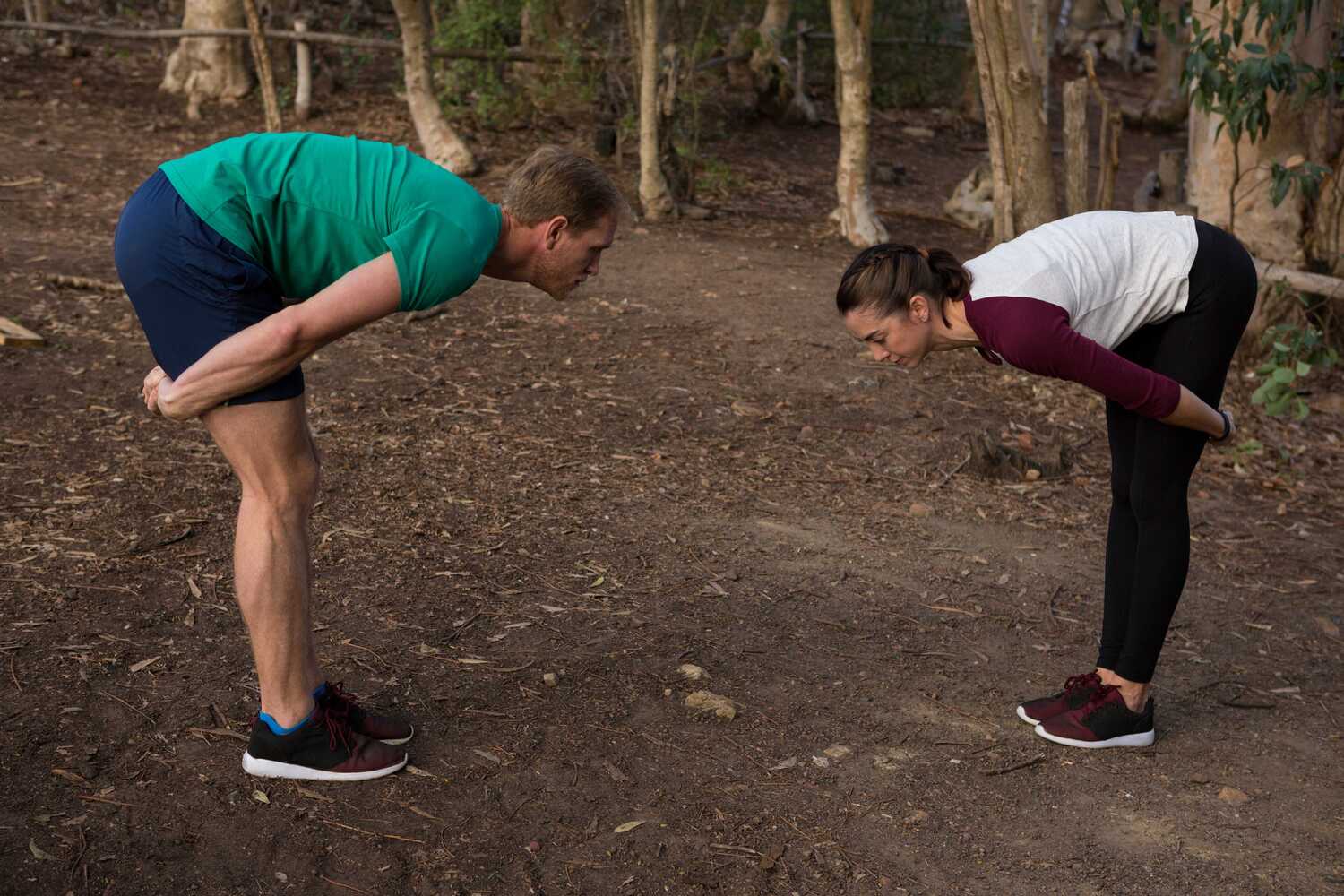- John DiBella
- Published: May 26, 2024
- Fact-checked by Dr. Desiree Granados

Stretching before bed is more than just a simple routine; it can significantly improve your overall well-being and quality of sleep. In this article, we’ll explore the numerous benefits of stretching before bed, the best stretches to incorporate into your routine, and tips for making this healthy habit a regular part of your nighttime schedule.
Whether you’re looking to improve your flexibility, alleviate stress, or simply enhance your sleep, stretching before bed can be a game-changer for your health and wellness.
What Are the Benefits of Stretching Before Bed?
Stretching before bed offers numerous benefits for sleep and overall well-being, including:
- Improved Blood Circulation: Gentle stretching improves blood flow throughout the body, aiding in recovery and relaxation.
- Reduced Muscle Tension: Stretching helps relieve the day’s accumulated tension in your muscles, promoting relaxation and reducing the likelihood of nighttime cramps.
- Enhanced Flexibility: Regular stretching can improve your flexibility over time, making it easier to move comfortably during the day.
- Relaxation: Engaging in a pre-sleep stretching routine can activate the parasympathetic nervous system, encouraging a state of calm and reducing stress levels.
- Improved Sleep Quality: Relaxed muscles and a calm mind contribute to deeper and more restorative sleep.
What Stretches Should I Avoid Before Bed?
Before heading to bed, it’s important to steer clear of dynamic stretches that could stimulate your body and interfere with your ability to fall asleep. Here are some stretches to avoid:
- Deep Backbends: Poses such as the full wheel or camel pose can be too invigorating, increasing your heart rate and making it harder to relax.
- Intense Core Workouts: Exercises like boat pose or planks can activate your core muscles, keeping your body alert rather than allowing it to wind down.
- Dynamic Stretching: Movements such as high knees or leg swings are designed to warm up the body and can raise your energy levels.
- High-Intensity Yoga Flows: Fast-paced sequences that include multiple sun salutations or vigorous transitions between poses can elevate your adrenaline and prevent relaxation.

10 Stretches to Do Before Bed to Improve Your Sleep
Some of the best bedtime stretches to incorporate into your routine include:
- Standing Forward Bend: Bend at the hips and reach for your toes, allowing your head and arms to hang heavy.
- Cat-Cow Stretch: On all fours, alternate between arching your back towards the ceiling and dipping it towards the floor.
- Child’s Pose: Kneel and sit back on your heels, stretching your arms forward on the floor while inhaling deeply.
- Seated Forward Bend: Sit with your legs straight out in front of you and reach for your toes, keeping your back straight.
- Legs-Up-the-Wall: Lie on your back with your legs extended up against a wall, forming an L-shape with your body.
- Happy Baby Pose: Lie on your back, bringing your knees towards your chest and holding the outsides of your feet.
- Supine Twist: Lying on your back, bend one knee and cross it over your body to the opposite side, gently twisting your spine.
- Butterfly Stretch: Sit with the soles of your feet pressed together and gently press your knees towards the floor.
- Neck Stretch: Gently tilt your head to one side, bringing your ear towards your shoulder, and hold.
- Reclining Bound Angle Pose: Lie on your back with the soles of your feet together and your knees dropped to the sides, placing a pillow underneath your knees if needed for support.
When Should I Stretch Before Bed?
To give your body time to transition to a state of restfulness, it’s best to stretch within an hour of your bedtime. Gentle stretches can help alleviate any muscle tension that has built up over the day, reduce physical stress, and signal to your mind that it’s time to wind down.
Can I Stretch While Injured?
On one hand, gentle stretching while injured can promote blood flow to the injured area, aiding in the healing process and helping you maintain some level of flexibility. It’s crucial, however, to approach such stretching with caution. If performed incorrectly, it could exacerbate the injury and delay your recovery.
How Should I Breathe While Stretching?
Proper breathing is essential to maximizing the benefits of stretching. Slow, deep breaths help oxygenate your muscles, making them more pliable and receptive to each stretch.
When you breathe in through your nose, your diaphragm expands, filling your lungs with air. On the exhale, focus on releasing tension from the muscle group you’re stretching. This rhythmic pattern of inhaling and exhaling will help calm your nervous system, promote relaxation, and increase your overall flexibility.
Resisting the urge to hold your breath is crucial, as this can cause discomfort and reduce the effectiveness of your stretching routine.
Conclusion
Engaging in a nightly stretching routine can transform your sleep quality and overall well-being. By committing to just a few minutes of mindful movement before bed, you can enjoy better flexibility, less stress, and a more relaxed state of mind. Remember to avoid overly stimulating stretches and focus on gentle, calming poses that prepare your body for rest.
If you want to level up your fitness, the Sanctuary Wellness Institute can help. One of our online personal trainers can design a customized fitness plan for you and provide ongoing instruction and support via regular virtual sessions. In addition, if you’re seeking to lose weight, the Sanctuary offers a medical weight loss program that you can participate in from the comfort of your own home. Book a free consultation today to learn more.
How we reviewed this article:
- Jennifer Huizen (2020). 10 stretches to try before bed https://www.medicalnewstoday.com/articles/stretching-before-bed#benefits
- Calm (2024). 7 bedtime stretches to help you relax and sleep better https://www.calm.com/blog/bedtime-stretches
- Emily Cronkleton (2021). 8 Stretches to Do Before Bed https://www.healthline.com/health/stretching-before-bed
- Danielle Pacheco (2023). Stretching Before Bed https://www.sleepfoundation.org/sleep-hygiene/stretching-before-bed
- Stretch22 (2021). The Right Stretch Therapy After Muscle Strain https://stretch22.com/the-right-stretch-therapy-after-muscle-strain/
- Flxme Stretch Therapy (2020). Relationship Between Stretching and Breathing https://www.flxme.ca/blog/2020/9/15/relationship-between-stretching-and-breathing
Current Version
May 26, 2024
Written By
John DiBella
Fact-checked By
Dr. Desiree Granados
Editorial Process
Our Editorial Process
Other Posts About Personal Trainer
No posts found!

John DiBella is the co-founder and CEO at The Sanctuary Wellness Institute. His goal is to foster healthier lifestyles to improve individuals’ quality of life and health span through online medical and non-medical services. When he’s not writing health & wellness articles for The Sanctuary, he enjoys hiking, camping, surfing and sailing.

